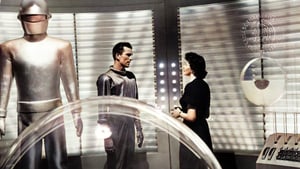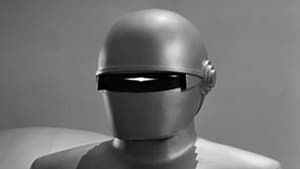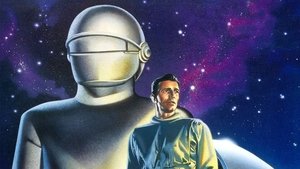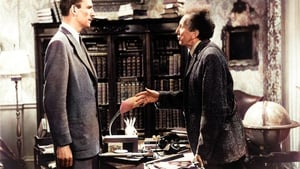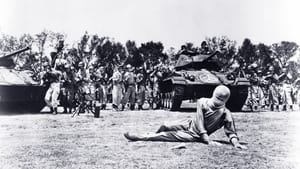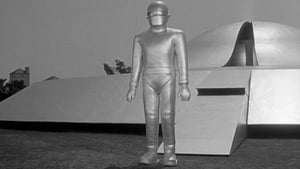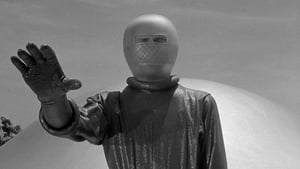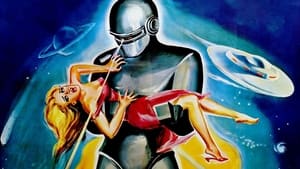Contact: [email protected]
Video Sources 0 Views
- Watch trailer
- The Day the Earth Stood Still

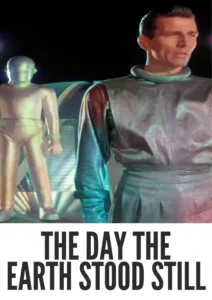
The Day the Earth Stood Still 1951 First Early Colored Films Version
Synopsis
Table of Contents
ToggleReview: The Day the Earth Stood Still (1951) – A Timeless Sci-Fi Classic with Thought-Provoking Themes

Introduction
The Day the Earth Stood Still, released in 1951, remains a cornerstone of science fiction cinema, blending thrilling storytelling with profound philosophical themes. Directed by Robert Wise, this iconic film explores humanity’s response to extraterrestrial contact and the consequences of its actions. In this review, we’ll delve into the enduring legacy of The Day the Earth Stood Still and its exploration of timeless questions about humanity’s place in the universe.
Check The Full Colorized Movies List
Check Our Colorized Movies Trailer Channel
Understanding The Day the Earth Stood Still (1951): Director, Cast, and Genre
Directed by Robert Wise, The Day the Earth Stood Still features a stellar cast including Michael Rennie as Klaatu, the enigmatic alien visitor, and Patricia Neal as Helen Benson, a human woman who becomes entangled in his mission. The film falls within the genre of science fiction, known for its speculative exploration of futuristic concepts and themes.
Exploring the World of The Day the Earth Stood Still (1951): Plot and Characters
The Day the Earth Stood Still unfolds as an extraterrestrial visitor, Klaatu, arrives on Earth with a powerful message for humanity. Accompanied by his robot companion Gort, Klaatu seeks to warn humanity about the dangers of its aggressive tendencies and the need for peace and cooperation among nations. As tensions escalate and the world teeters on the brink of destruction, Helen Benson becomes Klaatu’s ally in his mission to save humanity from itself.
The Art of Film Colorization
While The Day the Earth Stood Still was originally filmed in black and white, its early colorized version adds a new layer of visual richness and depth to its futuristic settings and groundbreaking special effects. The colorization process enhances the film’s visual impact and captures the otherworldly beauty of its alien landscapes with stunning visual clarity.
Early Colored Films: A Brief History
The history of early colored films is marked by innovation and experimentation as filmmakers sought to enhance the visual appeal of their movies. From hand-tinted frames to pioneering technicolor processes, the evolution of colorization techniques transformed the cinematic landscape, offering audiences a new way to experience classic stories and futuristic worlds.
The Day the Earth Stood Still (1951) and Its Early Colored Version
The decision to release The Day the Earth Stood Still in a colorized format was made with the intention of immersing audiences in the futuristic world of its alien visitors and enhancing the film’s visual impact. While some purists may prefer the original black and white version, the early colorized edition of the film adds a new dimension to its storytelling and captures the otherworldly beauty of its alien landscapes with stunning visual clarity.
The Debate Over Film Colorization
The debate over film colorization continues to divide audiences and industry professionals alike. While some argue that colorization breathes new life into classic films and makes them more accessible to modern audiences, others maintain that it compromises the artistic integrity of the original work. As technology advances and filmmaking techniques evolve, the debate over colorization remains a topic of ongoing discussion within the film community.
Examining The Day the Earth Stood Still (1951) as an Early Colored Film
Viewing The Day the Earth Stood Still in its early colorized iteration offers audiences a fresh perspective on its futuristic settings and groundbreaking special effects. The colorization process enhances the film’s visual impact and captures the otherworldly beauty of its alien landscapes with stunning visual clarity. As Klaatu delivers his message of peace and cooperation to humanity, the audience is drawn into a world of speculative wonder and existential reflection that resonates with timeless relevance.
Influence and Legacy: The Day the Earth Stood Still (1951)’s Impact on Cinema
The Day the Earth Stood Still is widely regarded as a seminal science fiction classic that transcends its genre roots to explore profound philosophical themes about humanity’s place in the universe. Its thought-provoking narrative, groundbreaking special effects, and powerful performances have inspired generations of filmmakers and influenced the portrayal of extraterrestrial contact and futuristic concepts in cinema. As a testament to its enduring relevance, The Day the Earth Stood Still remains a timeless masterpiece that continues to captivate audiences with its visionary storytelling and profound insights into the human condition.
Director’s Cinematic Legacy: Beyond The Day the Earth Stood Still (1951)
Robert Wise’s directorial legacy extends far beyond The Day the Earth Stood Still, encompassing a diverse body of work that explores a wide range of themes and genres. As a filmmaker, Wise was known for his visionary storytelling, innovative use of special effects, and ability to tackle complex philosophical themes with nuance and depth. The Day the Earth Stood Still stands as a testament to his talent and creativity, solidifying his reputation as one of the great directors of his time.
Themes Explored in The Day the Earth Stood Still (1951)
At its core, The Day the Earth Stood Still explores timeless themes of peace, cooperation, and the potential consequences of humanity’s aggressive tendencies. Through its speculative narrative and thought-provoking dialogue, the film challenges viewers to confront their own beliefs and assumptions about the nature of conflict and the possibility of extraterrestrial contact. As Klaatu delivers his message of peace and cooperation to humanity, the audience is reminded of the importance of working together to overcome the challenges that threaten our shared existence.
Reception and Controversy Surrounding The Day the Earth Stood Still (1951)
Upon its release, The Day the Earth Stood Still received widespread critical acclaim for its visionary storytelling, groundbreaking special effects, and thought-provoking themes. However, the decision to release the film in a colorized format sparked debate among fans and critics alike. While some praised the colorization process for enhancing the film’s visual impact, others questioned its necessity and expressed concern about preserving the integrity of Wise’s original vision.
Where to Watch The Day the Earth Stood Still (1951) Online
For those eager to experience The Day the Earth Stood Still for themselves, the film is readily available on popular streaming platforms such as Amazon Prime Video, Google Play Movies, and iTunes. Whether viewed in its original black and white format or its early colorized iteration, The Day the Earth Stood Still offers a captivating and thought-provoking cinematic experience that is sure to resonate with audiences.
FAQs About The Day the Earth Stood Still (1951)
1. Is The Day the Earth Stood Still based on a true story?
No, The Day the Earth Stood Still is a fictionalized portrayal of humanity’s response to extraterrestrial contact. While the characters and storyline are works of fiction, the film’s exploration of philosophical themes and speculative concepts draws inspiration from real-life events and universal human experiences.
2. Who starred in The Day the Earth Stood Still?
The Day the Earth Stood Still stars Michael Rennie as Klaatu, the enigmatic alien visitor, and Patricia Neal as Helen Benson, a human woman who becomes entangled in his mission. The film also features Hugh Marlowe as Tom Stevens, Helen’s love interest, and Sam Jaffe as Professor Jacob Barnhardt, a renowned scientist who plays a pivotal role in the film’s narrative. Their compelling performances bring depth and authenticity to their respective roles, elevating the emotional resonance of the film and capturing the complexities of human nature with stunning clarity.
3. What is the central message of The Day the Earth Stood Still?
At its core, The Day the Earth Stood Still delivers a powerful message about the importance of peace, cooperation, and understanding in a world threatened by conflict and aggression. Through its speculative narrative and thought-provoking dialogue, the film challenges viewers to confront their own beliefs and assumptions about the nature of humanity and the potential consequences of our actions.
4. Why was The Day the Earth Stood Still released in a colorized format?
The decision to release The Day the Earth Stood Still in a colorized format was made with the intention of enhancing the film’s visual impact and capturing the otherworldly beauty of its alien landscapes. While some purists may prefer the original black and white version, the early colorized edition of the film adds a new dimension to its storytelling and immerses viewers in the futuristic world of extraterrestrial contact with stunning visual clarity.
5. What is the legacy of The Day the Earth Stood Still?
The Day the Earth Stood Still is widely regarded as a seminal science fiction classic that transcends its genre roots to explore profound philosophical themes about humanity’s place in the universe. Its thought-provoking narrative, groundbreaking special effects, and powerful performances have inspired generations of filmmakers and influenced the portrayal of extraterrestrial contact and futuristic concepts in cinema. As a testament to its enduring relevance, The Day the Earth Stood Still remains a timeless masterpiece that continues to captivate audiences with its visionary storytelling and profound insights into the human condition.
6. Are there any sequels or remakes of The Day the Earth Stood Still?
While there have been attempts to remake The Day the Earth Stood Still, including a 2008 adaptation starring Keanu Reeves, none have achieved the same level of critical acclaim or cultural significance as the original 1951 film. However, the enduring legacy of The Day the Earth Stood Still continues to inspire filmmakers and audiences alike, reaffirming its status as a timeless classic of science fiction cinema.
7. Where can I watch The Day the Earth Stood Still online?
For those eager to experience The Day the Earth Stood Still for themselves, the film is readily available on popular streaming platforms such as Amazon Prime Video, Google Play Movies, and iTunes. Whether viewed in its original black and white format or its early colorized iteration, The Day the Earth Stood Still offers a captivating and thought-provoking cinematic experience that is sure to resonate with audiences.
Conclusion
In conclusion, The Day the Earth Stood Still (1951) remains a timeless science fiction classic that explores profound philosophical themes about humanity’s place in the universe. Whether viewed in its original black and white format or its early colorized iteration, Robert Wise’s visionary film offers a captivating and thought-provoking journey into the heart of extraterrestrial contact and the potential consequences of our actions. As Klaatu delivers his message of peace and cooperation to humanity, the audience is reminded of the importance of working together to overcome the challenges that threaten our shared existence. With its thought-provoking narrative, groundbreaking special effects, and powerful performances, The Day the Earth Stood Still continues to resonate with audiences of all ages, reaffirming its status as a timeless masterpiece of science fiction cinema.
